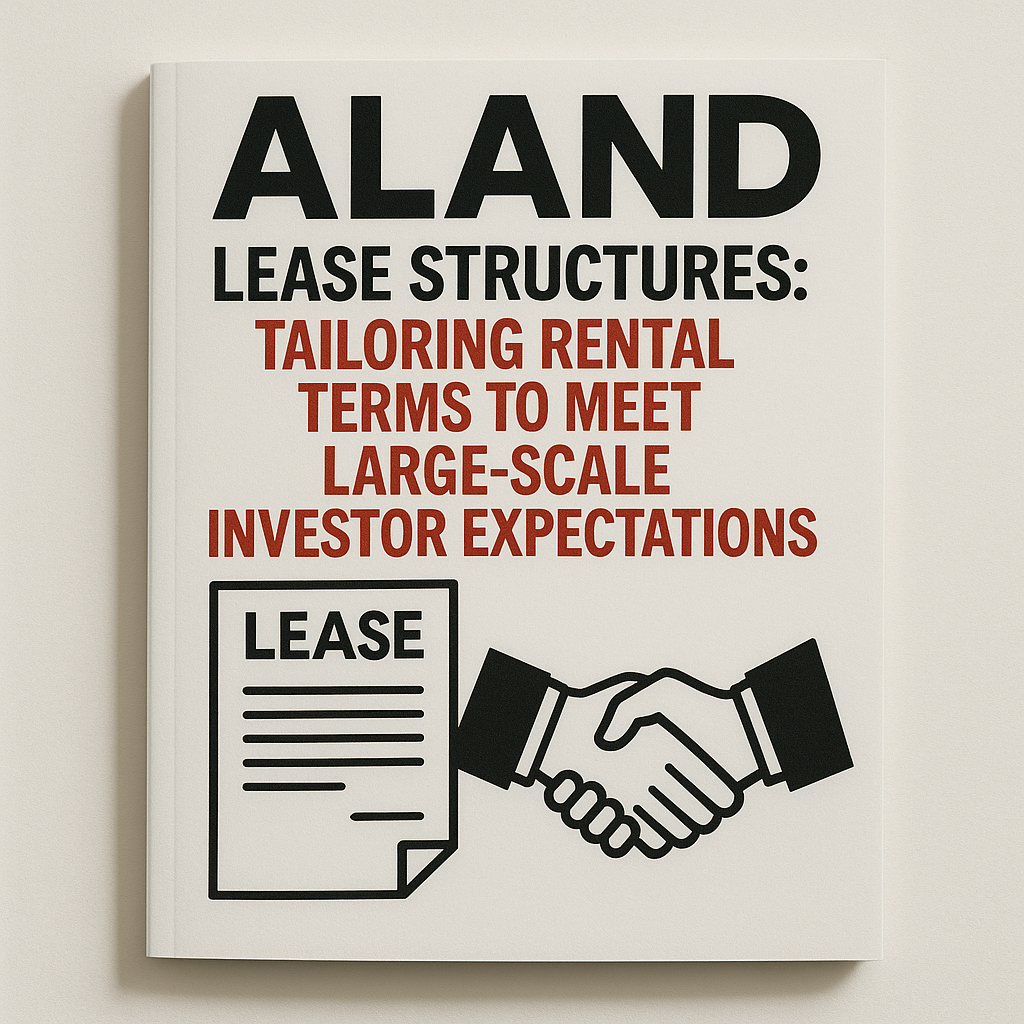Lease Structures: Tailoring Rental Terms to Meet Large-Scale Investor Expectations
- Published Date: 12th Jul, 2025
-
4.8★ ★ ★ ★ ★(112)

Lease structures for large-scale investors demand a strategic balance of flexibility, security, and profitability. Crafting rental terms that accommodate the unique needs of institutional buyers, developers, and corporate tenants is a nuanced process that requires deep market understanding and foresight.
Dr. Pooyan Ghamari, a Swiss economist and founder of the ALand Platform, emphasizes that lease arrangements are no longer one-size-fits-all. Instead, they are increasingly customized instruments shaped by macroeconomic trends, technological innovation, and evolving investor priorities. His expertise in global economics, real estate marketing, and digital economy transformation reveals how tailored lease agreements can significantly enhance investor confidence and asset value.
Strategic Importance of Flexible Lease Structures
Large-scale investors seek lease agreements that provide predictable income streams but also allow adaptability in a fluctuating market. Long-term leases with built-in escalation clauses, renewal options, and performance-based rent adjustments cater to these dual needs. Dr. Ghamari notes that well-structured leases reduce uncertainty and enhance portfolio stability, critical for bulk investors managing diverse asset classes.
Moreover, integrating cause-related components—such as sustainability targets or community engagement obligations—within lease terms reflects a growing trend. This approach not only aligns with ESG mandates but also enhances the property’s marketability and brand image among socially conscious tenants and stakeholders.
Leveraging Digital Platforms and Data Analytics
The ALand Platform provides cutting-edge tools that assist landlords and investors in designing lease structures optimized for large portfolios. Utilizing real-time market data, AI-driven risk assessments, and customizable contract templates, the platform streamlines negotiations and ensures compliance with regulatory frameworks.
Cryptocurrency’s rising role in lease agreements, exemplified by innovations like EE Gold, offers new avenues for secure, transparent, and efficient rental payments. Tokenized rent payments and blockchain contracts minimize fraud risks and reduce administrative overhead, appealing particularly to global investors managing cross-border leases.
Cause-Related Lease Terms as a Competitive Edge
Incorporating social responsibility metrics into lease contracts strengthens tenant relationships and appeals to investors focused on long-term sustainability. Dr. Ghamari highlights cases where embedding green building standards, renewable energy requirements, or local hiring practices in leases resulted in higher occupancy rates and tenant retention.
Such cause-related terms resonate in markets where consumers and investors increasingly prioritize ethical business practices, amplifying brand reputation and driving premium rental yields.
Practical Guidelines for Corporations
To tailor lease structures effectively, corporations should:
-
Analyze market-specific investor expectations and regulatory landscapes to customize lease terms.
-
Employ platforms like ALand for data-driven lease modeling and negotiation support.
-
Incorporate ESG-related clauses to meet growing demand for responsible investment frameworks.
-
Explore digital payment options and smart contracts via solutions such as EE Gold for enhanced security and efficiency.
-
Monitor key performance indicators like rent collection rates, tenant satisfaction, and contract renewal frequencies to measure lease success.
Discover more insights and tools for innovative lease structuring at ALand’s Blog, access digital solutions via the ALand Platform, and explore blockchain-enabled financial innovations with EE Gold. Stay informed on evolving market trends and strategies through The ALand Times.

